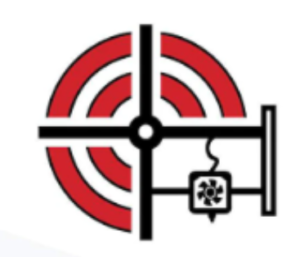A slowdown in the industry and particularly a tightening of access to capital following the additive manufacturing (AM) industry’s peak special purpose acquisition company (SPAC) phase in early 2021 is leading to significant changes in the companies driving 3D printing forward – both who they are and how they’re doing it. This was apparent from sessions and conversations at the Additive Manufacturing Strategies (AMS) conference in New York last week. Perhaps the industry is finally getting past a tendency to focuses on 3D printer specs and instead is getting serious about building complete tailored solutions for specific use cases.
Absent from the event, at least in a sponsoring or speaking role, were Desktop Metal, Markforged, and Nano Dimension. Re-emerging were companies like Shapeways (reborn post-bankruptcy), Carbon (more visible in the industry again lately), and Velo3D (financially rescued and re-energized). Customer voices, from Cobra and BMW to the U.S. Department of Defense, seemed stronger and asserted clearly what they needed from vendors. And new leaders are emerging to drive new kinds of conversations, including Aibuild, Nikon Advanced Manufacturing, and Xometry. Things are changing.
As a consequence, we heard less about 3D printers themselves, and much more about automated workflows, lean manufacturing, and quality management. After all, it’s ultimately about the parts, made consistently and in forms or quantities that would be problematic if produced using traditional injection molding, casting, or machining. These components are improving the performance of engines and production line efficiency, as well as reducing the cost of healthcare. Tangible customer value.
I was particularly struck by a panel of founders on Day 1 discussing how they had raised funds to scale their businesses. All three firms represented on the panel make their own 3D printers. None of them sell them. Fabric8Labs has a room-temperature electrochemical metal 3D printing technology ideal for applications like thermal management and power electronics for the data center market. Seurat’s Area Printing technology is designed to quickly 3D print production-quality metal parts for companies like Siemens Energy and Honda Motor, competing successfully against traditional techniques like machining and casting. LightForce Orthodontics is 3D printing ceramic braces, replacing a traditional injection molding process that basically disincentivizes innovation.
All of them are taking what Arno Held, managing partner at AM Ventures, called a vertical integration, application-specific approach, rather than a horizontal diversification, application-agnostic approach. Too often with the latter strategy, companies have been adding stacks of technologies that sometimes even cannibalize each other, without ever really winning a niche or a vertical, Held says. In contrast, we’re seeing companies really getting close to their customers to optimize for specific applications, iterating technology improvements to quickly lower costs, improve performance, quality, and consistency.
As Fabric8Labs CEO and C-Founder Jeff Herman said, “We realized we could price based on the value created versus the cost of the parts. We can have healthy margins on our components and compete with traditional manufacturing and not have to deliver equipment to customers.”
Seurat CEO and Co-Founder James DeMuth noted that they are able to learn and iterate to improve their technology and printers in a way that just wouldn’t be possible with the traditional razor-and-razor-blade model. “We’re starting with a very low-cost feedstock; we’re starting with a very simple printer,” he said. “It helped us avoid trying to take something that’s very expensive and make it very cheap, and instead just start something very cheap and economical and just scale it up.” That iterative approach is a hallmark of what has made so may Silicon Valley companies successful.
Plus, as LightForce CEO and Co-Founder Alfred Griffin, observed, this process puts teeth (ahem) behind the platitude of being customer-focused. “We’re going to be the best company in the industry listening to our customers who are orthodontists. And when they see the same vision as you, it’s a beautiful feedback flywheel,” he said. “It’s enabled us to listen to our customers and then actually enact change.” (Incidentally, Griffin, an orthodontist himself and a lecturer at the Harvard School of Dental Medicine, said this was literally the first 3D printing conference he’d ever attended.)
That was the perspective of some of the vendors but it’s also the perspective of major customers. On Day 2, Stefanus Bosch, head of AM predevelopment and planning at BMW, said his most productive 3D printing system uses an AM technique embedded inside a larger system to produce thousands of parts per day. It is a highly automated manufacturing process designed to run 24/7.
In polymers, BMW is leveraging low-cost open materials purchased directly from the chemical company to produce thousands of heavy, 8 kg components that are nevertheless additively designed to be lighter than they would be otherwise. BMW’s focus is on standardizing 3D printing maintenance with the rest of its maintenance procedures, integrating AM software tools with the applications its engineers are already using, integrating the material streams, and automating everything. The closer you are to a specific application, and the more deeply you are in tune with the actual production process, the better this is going to go.
This may still be another challenging year for the AM sector, but the way out, as one speaker observed, it may be necessary to stop thinking about it as an industry and focus instead on the needs of customers’ industries, the more specific the better. AM has not fixed manufacturing yet. If we had, labor productivity in the U.S. would be improving. Yet, according to the New York Federal Reserve, labor productivity in the U.S. has been negative 0.5% per year from 2010 to 2022. There is a desperate need to do this better, across industries, and 3D printing, when well-integrated with other advanced manufacturing technologies in targeted applications, can make a disruptive difference.
Aaron Pearson is the founder and CEO of Narratio Marketing & Communications, a brand storytelling firm for industrial technology companies, and the former global vice president of public relations for Stratasys.
Images courtesy of 3DPrint.com.
Subscribe to Our Email Newsletter
Stay up-to-date on all the latest news from the 3D printing industry and receive information and offers from third party vendors.





